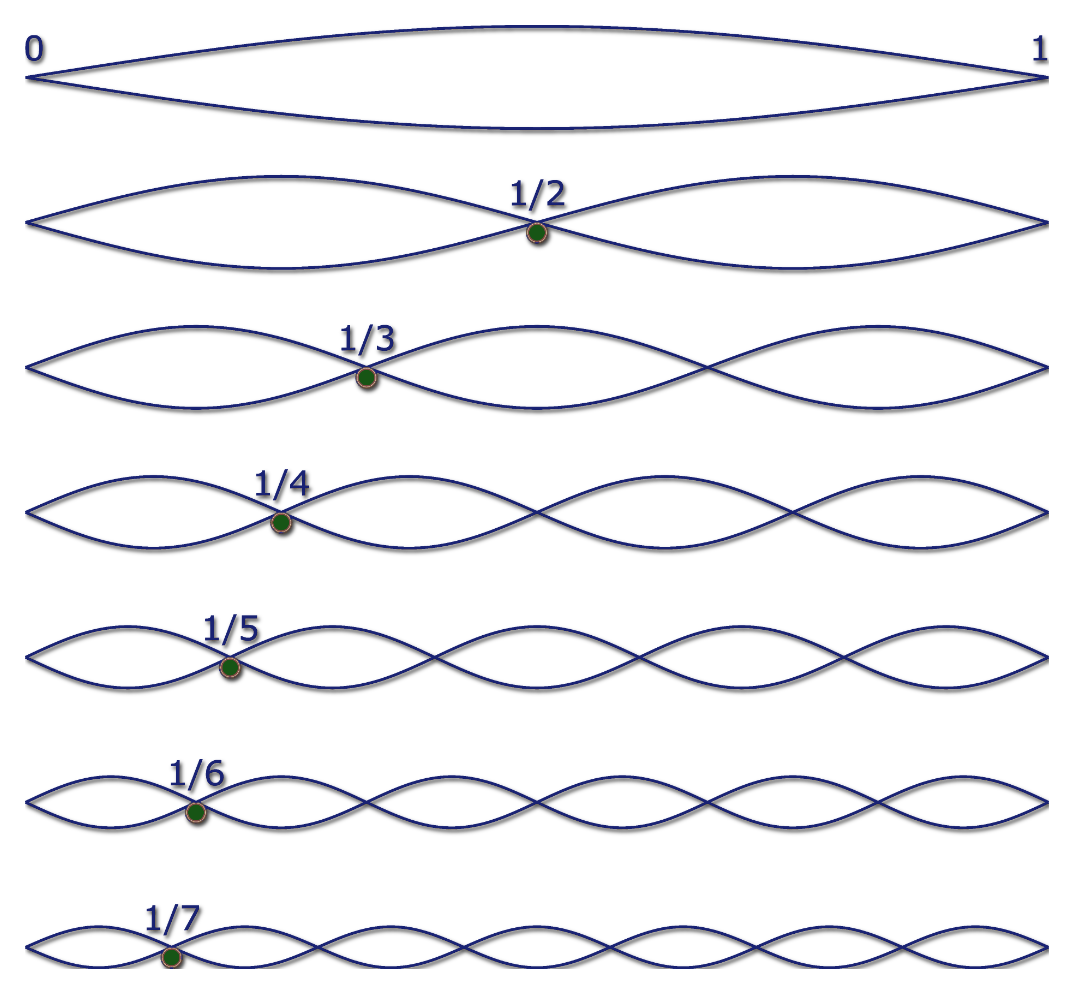Harmonic Series
A harmonic series is the sequence of sounds - pure tones, represented by sinusoidal waves - in which the frequency of each sound is an integer multiple of the fundamental, the lowest frequency.
Pitched musical instruments are often based on an acoustic resonator such as a string or a column of air, which oscillates at numerous modes simultaneously. At the frequencies of each vibrating mode, waves travel in both directions along the string or air column, reinforcing and canceling each other to form standing waves. Interaction with the surrounding air causes audible sound waves, which travel away from the instrument. Because of the typical spacing of the resonances, these frequencies are mostly limited to integer multiples, or harmonics, of the lowest frequency, and such multiples form the harmonic series (see harmonic series (mathematics)).
The musical pitch of a note is usually perceived as the lowest partial present (the fundamental frequency), which may be the one created by vibration over the full length of the string or air column, or a higher harmonic chosen by the player. The musical timbre of a steady tone from such an instrument is strongly affected by the relative strength of each harmonic.
The staves to the left are harmonic series for a brass instrument that has a "C" fundamental when no valves are being used - for example, a C trumpet. Remember, there is an entire harmonic series for every fundamental, and any note can be a fundamental. You just have to find the brass tube with the right length. So a trumpet or tuba can get one harmonic series using no valves, another one a half step lower using one valve, another one a whole step lower using another valve, and so on. By the time all the combinations of valves are used, there is some way to get an ‘in-tune’ version of every note they need.

Brass Harmonic Series
This image shows the notation of the first eight notes of an open brass instrument (no valves pressed): C, C, G, C, E, G, B-flat, C.

